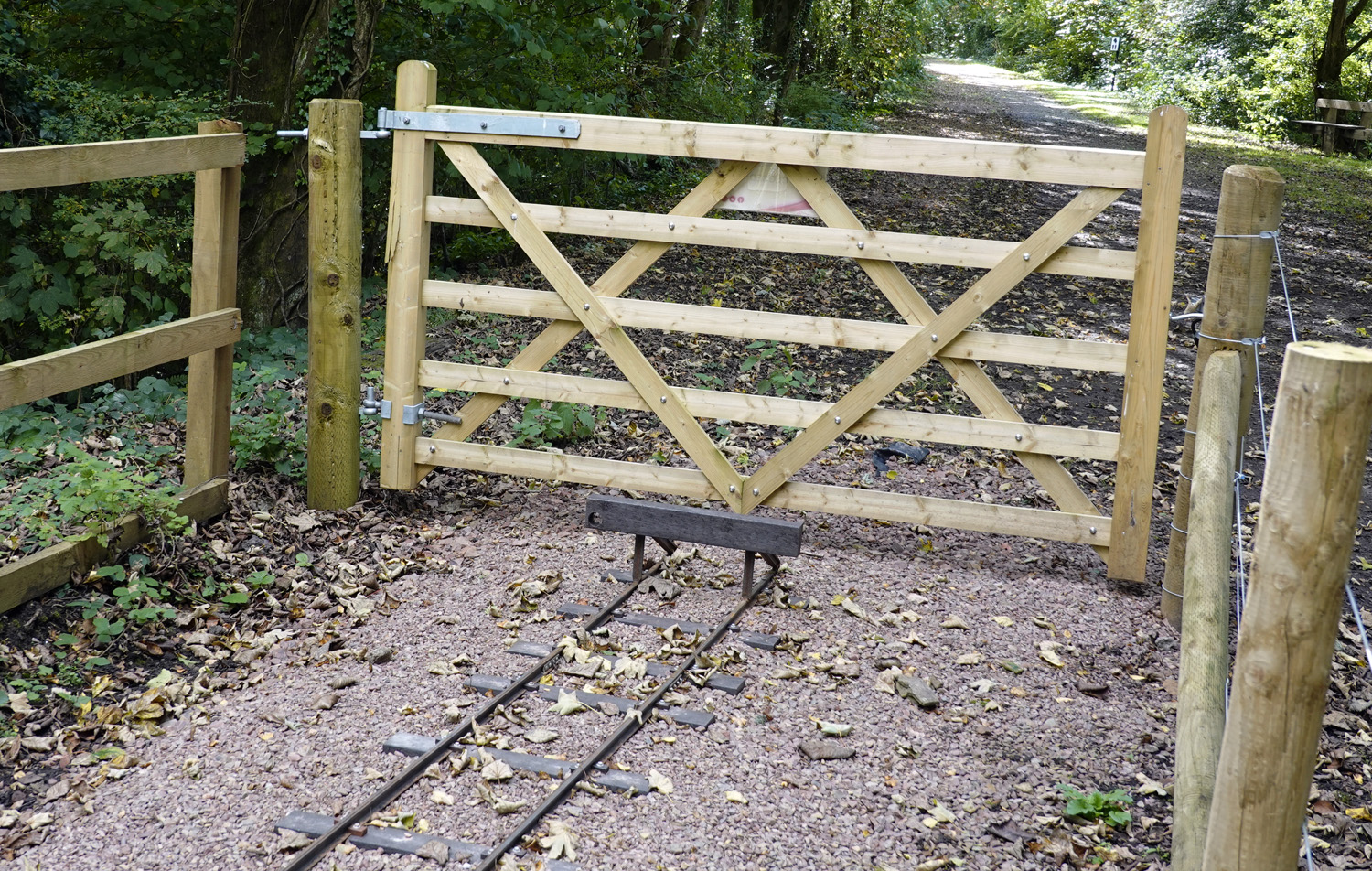 HS2 has been cancelled north of Birmingham. The prime minister, Rishi Sunak, announced this at the Conservative Party conference on 4 October, some 13 years after the plan was adopted by the Labour government to build a new high-speed railway from London to Birmingham, which then would branch into two legs – one to Manchester and one to Leeds. The initial budget for this was £15.8bn to £17.4bn. When it came to power, the Conservative-Liberal coalition government ordered a review of the plan. In light of this, the government gave the green light in January 2012 for the full Y-shaped project to go ahead. The London–Birmingham leg was planned to open in 2026 and the two northern legs from 2033.
HS2 has been cancelled north of Birmingham. The prime minister, Rishi Sunak, announced this at the Conservative Party conference on 4 October, some 13 years after the plan was adopted by the Labour government to build a new high-speed railway from London to Birmingham, which then would branch into two legs – one to Manchester and one to Leeds. The initial budget for this was £15.8bn to £17.4bn. When it came to power, the Conservative-Liberal coalition government ordered a review of the plan. In light of this, the government gave the green light in January 2012 for the full Y-shaped project to go ahead. The London–Birmingham leg was planned to open in 2026 and the two northern legs from 2033.
 The project was divided into two phases: Phase 1 to Birmingham and Phase 2 to Manchester and Leeds. The Phase 1 parliamentary bill became law in February 2017 and soon after that, various construction contracts were signed. After some delays, preparation for construction work began in June 2019. There was growing doubt, however, about the viability of the northern legs.
The project was divided into two phases: Phase 1 to Birmingham and Phase 2 to Manchester and Leeds. The Phase 1 parliamentary bill became law in February 2017 and soon after that, various construction contracts were signed. After some delays, preparation for construction work began in June 2019. There was growing doubt, however, about the viability of the northern legs.
On becoming prime minister in 2019, Boris Johnson ordered an independent review of the project after estimates that the costs of the full project would be some £88bn. The review, chaired by Douglas Oakervee, was published in December 2019 (for a link, see list of reports below). It found that costs (in 2015 prices) were likely to be between £62bn and £69bn. Nevertheless, it concluded that the project should proceed: that the original rationale for HS2 still held; that there were:
no shovel-ready alternative investments in the existing network that were available: if HS2 were to be cancelled, many years of planning work would be required to identify, design and develop new proposals; that the upgrading of existing lines would also come at a high passenger cost with significant disruption; that there would be serious consequences for the supply chain, the fragile UK construction industry and confidence in UK infrastructure planning if HS2 were to be cancelled at this late stage.
In February 2020, the prime minister announced that HS2 would go ahead, including the legs to Manchester and Leeds. The Department for Transport published a document (see source line to the following table) giving the full business case for Phase 1 and the outline case for Phase 2. The document itemised the costs and benefits as estimated at the time.
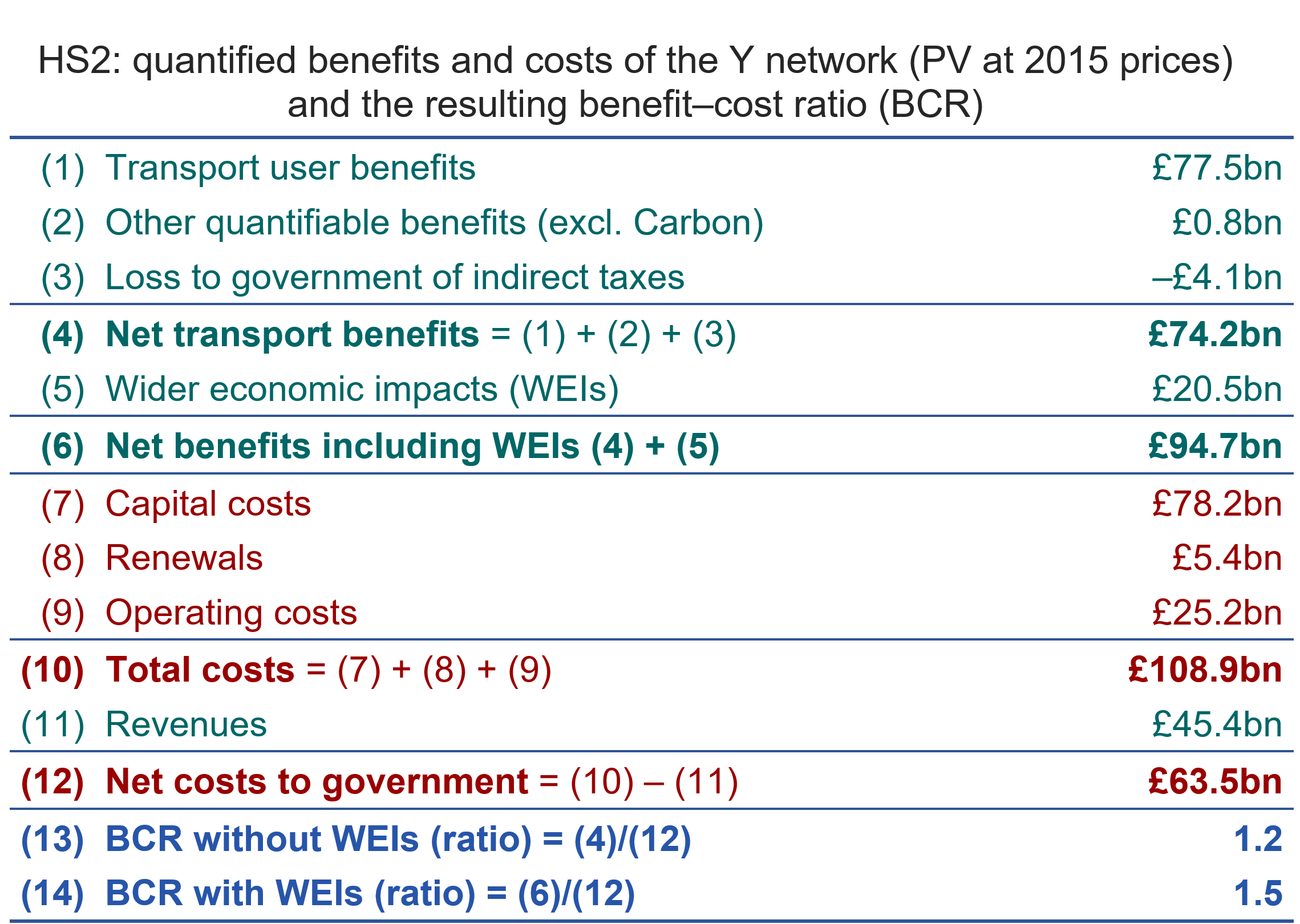
Source: Full Business Case: High Speed Two, Table 2.9, Department for Transport (April 2020)
Box 12.6 in Economics (eleventh edition) and Case study 8.16 on the Essentials of Economics (ninth edition) student website looks at these costs and benefits. The above table is taken from the box/case study. Net transport benefits (present value at 2015 prices) were estimated to be £74.2bn. These include benefits to passengers from shorter journey times, greater reliability, greater connectivity and less crowding, and reduced congestion on roads. They also include other benefits, such as a reduction in carbon emissions and a reduction in road accidents. Net benefits also include the wider benefits from greater connectivity between firms (resulting in increased specialism, trade and investment), greater competition and greater labour mobility. These wider benefits were estimated to be £20.5bn, giving total net benefits of £94.7bn.
Total costs to the government were estimated to be £108.9bn and revenues from fares to be £45.4bn, giving total net costs of £63.5bn. This gave a benefit/cost ratio of 1.5 (£94.7bn/£63.5bn). In the light of these findings, the government announced in September 2020 that the main work on the London to Birmingham leg would begin, despite the Public Accounts Committee’s finding that the project was badly off course and lacking in transparency.
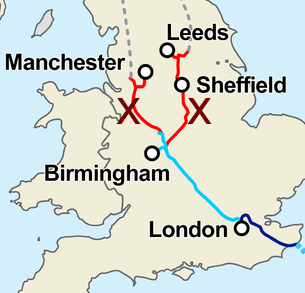
Concern was expressed over whether the Leeds leg would go ahead, but in May 2021, the transport secretary, Grant Shapps, confirmed that it would be completed. However, with the publication of the Integrated Rail Plan in November 2021 (for a link, see list of reports below), the government decided that the eastern leg of HS2 would no longer reach Leeds but instead end in the East Midlands. Then in June 2022, the link between the HS2 line near Manchester and the West Coast Main Line was scrapped. This would have allowed HS2 trains to reach Scotland.
In early 2023, it was announced that the building of the terminus at Euston was being put on hold. Many interpreted this as meaning that it was being scrapped, with trains terminating at Old Oak Common, some six miles from Central London.
Finally, as we have seen, HS2 north of Birmingham has now been scrapped and the government is seeking private-sector funding to build the terminus at Euston and complete the line from Old Oak Common.
Arguments for scrapping the northern legs
The main argument given by the government was that projected costs have risen substantially above original estimates and that by cancelling the Manchester and east Midlands legs, the money saved could be better used elsewhere. The argument is one of opportunity cost. The cost of going ahead would mean not going ahead with better-value alternatives.
The government claims that £36bn will be saved and that this will be diverted to rail, road and other transport projects, primarily (although not exclusively) in the north of England. The money would be spent between 2029 and 2040. Projects include spending additional money on the planned upgrading of the rail link between Manchester and Liverpool, Sheffield, Leeds and Hull; building a new station at Bradford; developing a mass transit system for Leeds and its surroundings; a £2.5bn fund for improved transport for smaller cities, towns and the countryside in the north of England; extra funding for transport in the east and west Midlands, including funding a Midlands Rail Hub. Out of the £36bn, £6.5bn would be for projects elsewhere, including road improvement.
 In order to judge whether the diversion of funds represents a better use of money, a full analysis of costs and benefits of the various projects would need to be conducted and compared with an updated cost–benefit analysis of continuing with the legs to Manchester and the east Midlands and possibly reinstating the Leeds leg too.
In order to judge whether the diversion of funds represents a better use of money, a full analysis of costs and benefits of the various projects would need to be conducted and compared with an updated cost–benefit analysis of continuing with the legs to Manchester and the east Midlands and possibly reinstating the Leeds leg too.
One possible benefit for the government is a political one. It hopes that promising more local projects rather than HS2 will appeal to the electorate in large parts of the north of England who are suffering from poor and unreliable transport links. However, most of these projects will be started well beyond the next election and this political gain may turn out to be small. Indeed, cancelling HS2 may breed cynicism, with people wondering whether any promised new projects will actually be delivered.
Arguments against scrapping the northern leg(s)
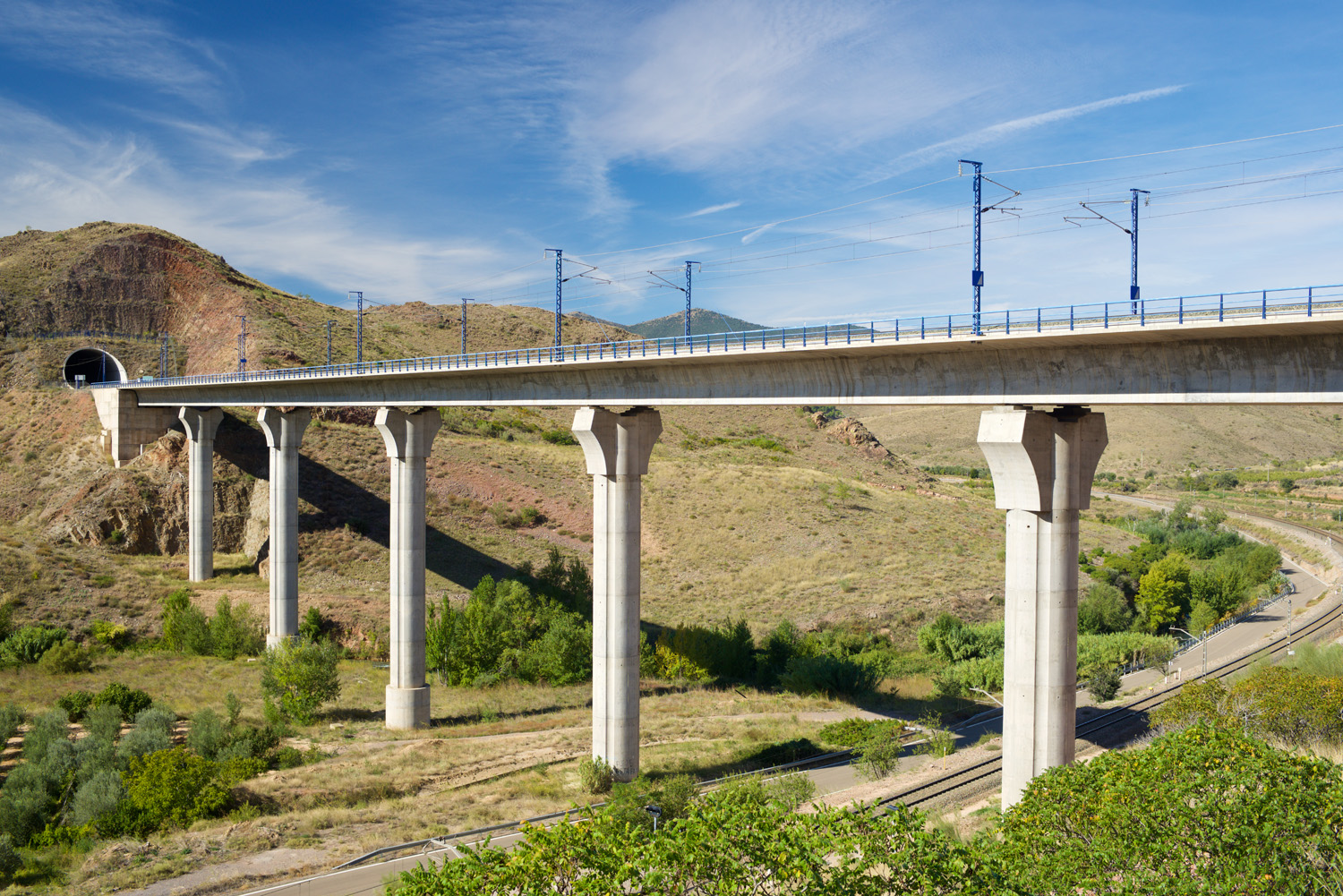 The benefits originally identified from HS2 will now be lost. It is not just that the northern legs of HS2 would have provided faster travel to Manchester and Leeds, but the new lines would have reduced congestion for slower trains and freight on existing lines. This has been the experience in countries such as Japan and Spain, which have invested heavily in new, separate high-speed lines.
The benefits originally identified from HS2 will now be lost. It is not just that the northern legs of HS2 would have provided faster travel to Manchester and Leeds, but the new lines would have reduced congestion for slower trains and freight on existing lines. This has been the experience in countries such as Japan and Spain, which have invested heavily in new, separate high-speed lines.
When the line is completed to Birmingham, the HS2 trains will be able to continue north of Birmingham on existing lines. But these lines are heavily congested, which will limit the number of HS2 trains that can use them. Also they will be restricted to 110 mph on these lines as they have no tilting mechanism. Also they will have a maximum capacity of only 550 seats (a single train set) as the platforms at Manchester Piccadilly cannot accommodate double-set trains. The existing Pendalino trains on the West Coast mainline can travel at 125 mph as they do have the tilting mechanism and they have a higher capacity of 607 seats.
Then there are the signals that cancellation sends to industry about whether governments can be trusted to follow through on public-sector projects. Many business had expanded or relocated to places near the HS2 routes. Many others will wonder whether the promised new projects will go ahead. Indeed, shortly after giving a list of the projects (some of which had already been built or were being built), the list was removed from the government website. There is already a mood of scepticism amongst the electorate. Polling following the initial announcement showed that a majority believed that it was unlikely that the Conservatives would deliver the other projects if they won the next election.
The opportunity cost argument that the money would be better spent on alternative transport projects is predicated on various assumptions. One is that the money will actually be spent, which, as we have seen, people consider doubtful. Another is that the only choice is either spending a fixed pot of money on the northern leg(s) of HS2 or spending it on the alternative projects announced by the prime minister. It could be argued that the government should proceed with both the full HS2 and these other projects, and fund it by extra taxation. Investment as a percentage of GDP is low in the UK compared with other countries. Over the past 10 years, it has averaged 17.8% in the UK. This compares with 21.0% in the USA, 21.5% in Germany, 23.7% in France and 25.4% in Japan. Also, public-sector investment is low in the UK compared with that in other countries.
Assessing the arguments
Many of the costs and benefits of long-term projects, such as HS2, occur many years hence. There is, therefore, a great deal of uncertainty over their magnitude. This makes it extremely difficult to reach a clear conclusion over the desirability of cancelling HS2 north of Birmingham or continuing with it. Under such circumstances, politics tends to dominate decision making.
Articles
- Rishi Sunak promises more rail, road and bus links
BBC News (4/10/23)
- The HS2 rail line: what has been cut and what will replace it?
Financial Times Gill Plimmer, Phillip Georgiadis, Jennifer Williams and Jim Pickard (4/10/24)
 HS2 explained: What is the route now, what are the costs and why is the Manchester leg being axed?
HS2 explained: What is the route now, what are the costs and why is the Manchester leg being axed?Sky News, Sarah Taaffe-Maguire (5/10/23)
- Rishi Sunak finally axes HS2 in the north – weeks after The Independent revealed plan
Independent, Jon Stone and Adam Forrest (4/10/23)
- HS2 | Timeline of a mistreated megaproject
New Civil Engineer, Rob Hakimian (4/10/23)
- HS2 scale-back creates ‘chilling effect’
Construction News, Catherine Moore (5/10/23)
- How HS2 caused the UK to lose focus on ‘levelling up’ during years of high-speed rail delays
The Conversation, Steven McCabe (28/9/23)
- What Rishi Sunak scrapping HS2 – and promising a new ‘Network North’– means for the north of England
The Conversation Tom Arnold (4/10/23)
- HS2: Why Rishi Sunak’s big gamble may not pay off
BBC News, Faisal Islam (5/10/23)
- ‘Managed decline’: the uncertain future for British rail after cuts to HS2
Financial Times, Philip Georgiadis, Gill Plimmer and Jim Pickard (6/10/23)
 Investment outside London could bring £100bn boost to economy, says Bank of England’s former chief economist
Investment outside London could bring £100bn boost to economy, says Bank of England’s former chief economistChannel 4 News, Helia Ebrahimi interviews Andy Haldane (27/9/23)
- HS2 surgery is the wrong choice say leading academics
RailTech, Simon Walton (3/10/23)
- Why has HS2 ended up being so expensive?
The Guardian, Gwyn Topham (25/9/23)
- Ten problems with Rishi Sunak’s Network North announcement
The Guardian, Helen Pidd (5/10/23)
- International investors are laughing at the HS2 shambles
The Guardian, Nils Pratley (4/10/23)
- Spain’s high-speed trains aren’t just efficient, they have transformed people’s lives
The Guardian, María Ramírez (11/10/23)
Government Press Release
Reports
Questions
- Why have the costs of HS2 (in real terms) risen substantially since the first estimates in 2012?
- Identify the types of environmental costs and benefits of the full Y-shaped HS2 project. Why might such costs and benefits be difficult to measure?
- Is the opportunity of cost of proceeding with the full Y-shaped HS2 a range of other transport projects? Explain.
- Find out the level of public-sector investment expenditure as a percentage of (a) total government expenditure and (b) GDP in some other developed countries and compare them with the UK. Comment on your findings.
- Should the decision whether or not to go ahead with the Manchester and east Midlands legs have been delayed until a new updated cost–benefit analysis had been conducted?
- If most of the benefits from the originally planned HS2 will be now be lost with the line ending at Birmingham, should this leg to Birmingham also be cancelled, even though many of the costs have already been incurred? Explain your reasoning.
 When building supply and demand models, the assumption is usually made that both producers and consumers act in a ‘rational’ way to achieve the best possible outcomes. As far as producers are concerned, this would mean attempting to maximise profit. As far as consumers are concerned, it would mean attempting to achieve the highest satisfaction (utility) from their limited budget. This involves a cost–benefit calculation, where people weigh up the costs and benefits of allocating their money between different goods and services.
When building supply and demand models, the assumption is usually made that both producers and consumers act in a ‘rational’ way to achieve the best possible outcomes. As far as producers are concerned, this would mean attempting to maximise profit. As far as consumers are concerned, it would mean attempting to achieve the highest satisfaction (utility) from their limited budget. This involves a cost–benefit calculation, where people weigh up the costs and benefits of allocating their money between different goods and services.
For consumers to act rationally, the following assumptions are made:
- Consumer choices are made independently. Their individual choices and preferences are not influenced by other people’s, nor do their choices and preferences impact on other people’s choices.
- The consumer’s preferences are consistent and fixed.
- Consumers have full information about the products available and alternatives to them.
- Given the information they have and the preferences they hold, consumers will then make an optimal choice.
 Black Friday can be seen as a perfect occasion for consumers to get their hands on a bargain. It is an opportunity to fulfil a rational need, for example if you were needing to replace a household appliance but were waiting until there was a good deal before committing to a purchase.
Black Friday can be seen as a perfect occasion for consumers to get their hands on a bargain. It is an opportunity to fulfil a rational need, for example if you were needing to replace a household appliance but were waiting until there was a good deal before committing to a purchase.
The assumption that people act rationally has been at the forefront of economic theory for decades. However, this has been questioned by the rise in behavioural economics. Rather than assuming that all individuals are ‘rational maximisers’ and conduct a cost–benefit analysis for every decision, behavioural economists mix psychology with economics by focusing on the human. As humans, we do not always behave rationally but, instead, we act under bounded rationality.
As economic agents, we make different decisions depending on our emotional state that differ from the ‘rational choice’ assumption. We are also influenced by our social networks and often make choices that provide us with immediate gratification. Given this, Black Friday can also be viewed as a great opportunity to fall prey to irrational and emotional shopping behaviours.
Black Friday originated in the USA and is the day after Thanksgiving. During this annual shopping holiday, retailers typically offer steep discounts to kick off the holiday season. The Black Friday shopping phenomenon is less than a decade old in the UK but it’s now an established part of the pre-Christmas retail calendar. Between 2010 and 2013, Black Friday gradually built up momentum in the UK. In 2014, Black Friday became the peak pre-Christmas online sales day and many online retailers haven’t looked back.
 Arguably, from a behavioural economist’s perspective, the big problem with Black Friday is that all the reasons consumers possibly have to partake can be largely illusory. Consumers are bombarded with the promise of one-off deals, large discounts, scarce products, and an opportunity to get their holiday shopping done all at once. However, on Black Friday, our rational decision-making faculties are tested, just as stores are trying their hardest to maximise consumers’ mistakes.
Arguably, from a behavioural economist’s perspective, the big problem with Black Friday is that all the reasons consumers possibly have to partake can be largely illusory. Consumers are bombarded with the promise of one-off deals, large discounts, scarce products, and an opportunity to get their holiday shopping done all at once. However, on Black Friday, our rational decision-making faculties are tested, just as stores are trying their hardest to maximise consumers’ mistakes.
There are many ‘behavioural traps’ that consumers often fall into. The following two are most likely to occur on Black Friday:
- Scarcity and loss aversion. Shoppers may fear that they will miss out on the best sales deals available if they don’t buy it now. Retailers commonly spark consumers’ interest by highlighting limited stocks available for a limited time only, which raises the perceived value of these goods. This sense of scarcity can further trigger the need to buy now, increasing the ‘Fear of Missing Out’. Consumers therefore need to ask themselves if they are really missing out if they don’t buy it now? And is the discount worth spending the money today, or is there something else I should be spending it on or saving for?
- Sunk cost fallacy. Once consumers have started to invest, they often struggle to close out investments that prove unprofitable. On Black Friday, customers have already made the initial investment of getting up early, driving to the shops, finding parking and waiting in a queue, before they have purchased anything. Therefore, they will be inclined to buy more than they initially went for. It is important therefore to think about each purchase in isolation.
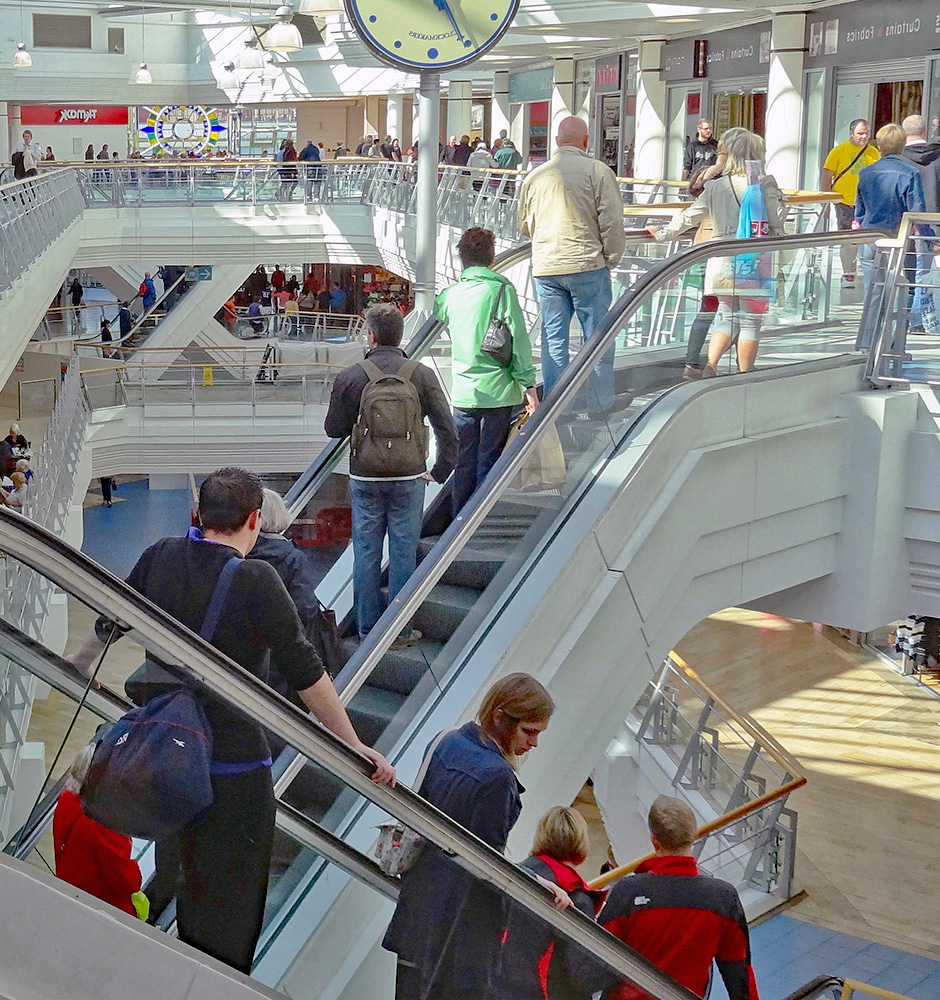 This year, however, there is also the added complication of the rising cost of living. Whilst this may deter some consumers from unnecessary, impulse purchases, some consumers are using Black Friday as an opportunity to stock up on expected future purchases, hedging against likely price rises over the coming months.
This year, however, there is also the added complication of the rising cost of living. Whilst this may deter some consumers from unnecessary, impulse purchases, some consumers are using Black Friday as an opportunity to stock up on expected future purchases, hedging against likely price rises over the coming months.
It is thought that more consumers will be looking for a combination of high quality but low price to make sure their purchases are affordable and can last for a long time. According to PwC, many consumers have closely monitored their favourite brands in anticipation that big-ticket electronics, more pricey winter wear or Christmas stocking fillers will be discounted. Consumers are also in search of bargains more than ever given rising inflation. This would suggest a shift in attitude, meaning consumers will be more aware of what they cannot afford rather than giving in to emotional temptation brought on by Black Friday.
Retailers are fully aware of the cognitive biases that surround Black Friday and take full advantage of them. ‘Cyber Monday’ follows right after Black Friday, giving retailers an extra opportunity for them to keep those ‘urgent’ or ‘unmissable’ sales going and increase their revenues.
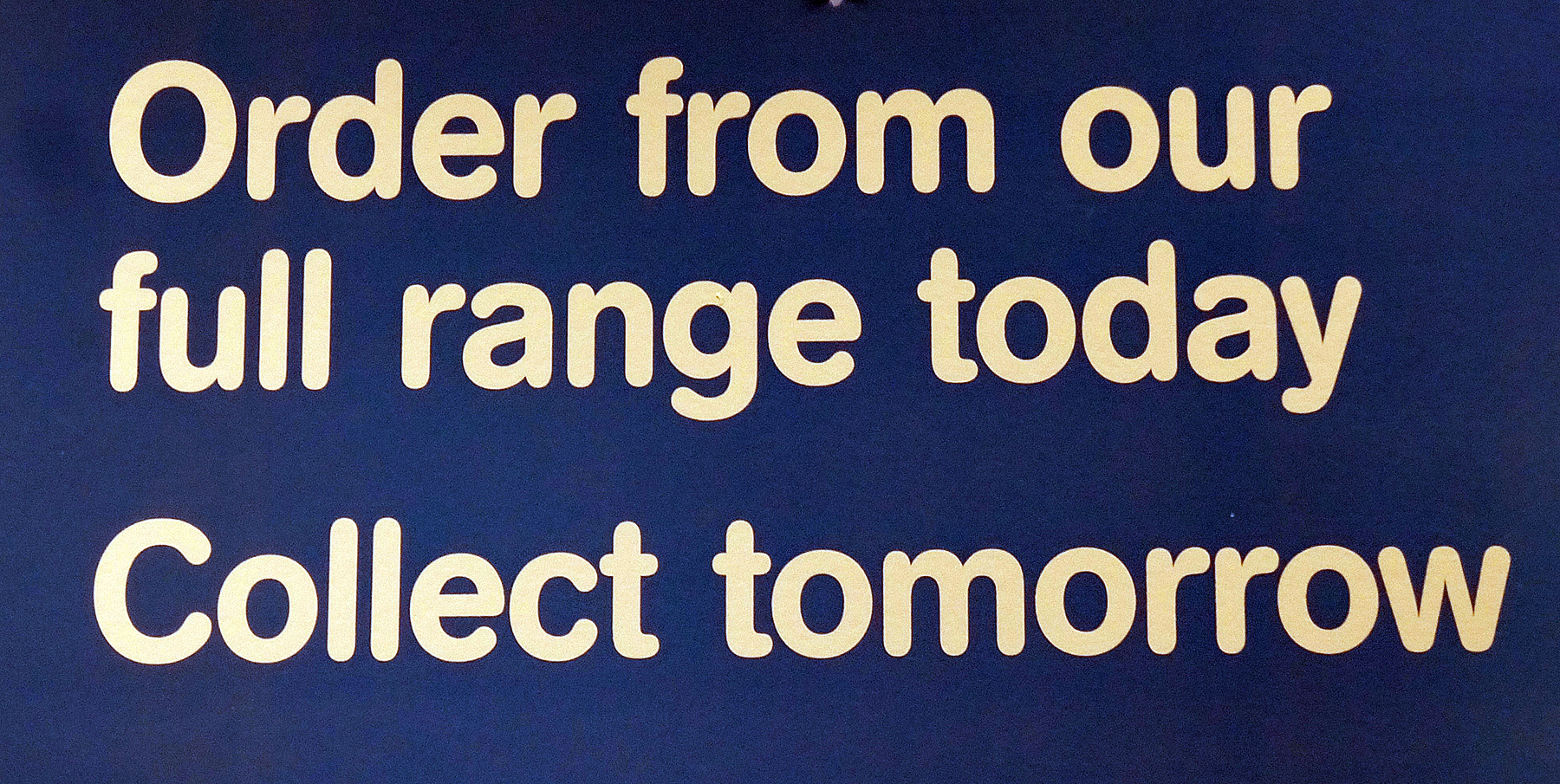 Black Friday is one of the biggest shopping days of the year. However, the way retailers approach it is growing increasingly mixed. Stores such as Amazon, Argos, Currys and John Lewis have started offering Black Friday deals much earlier in the month, leading some to refer to the event as ‘Black November’. Other stores, such as M&S and Next, didn’t take part at all this year.
Black Friday is one of the biggest shopping days of the year. However, the way retailers approach it is growing increasingly mixed. Stores such as Amazon, Argos, Currys and John Lewis have started offering Black Friday deals much earlier in the month, leading some to refer to the event as ‘Black November’. Other stores, such as M&S and Next, didn’t take part at all this year.
Ultimately, Consumers can use insights from behavioural economics to empower them to make more rational decisions in such circumstances: ones that better align with their individual budgets. Nevertheless, the Black Friday sales mania can trigger our deepest emotional and cognitive responses that lead to unnecessary spending.
Articles
Video
Questions
- Discuss what is meant by the term ‘rational consumer’. Is it a useful generalisation about the way consumers behave?
- Discuss what is meant by the term ‘rational producer’. Is it a useful generalisation about the way firms behave?
- What is cost–benefit analysis? What is the procedure used in conducting a cost–benefit analysis?
- In addition to scarcity and loss aversion and the sunk cost fallacy, are there any other reasons why consumers may not always act rationally?
- Are people likely to be more ‘rational’ about online Black Friday purchases than in-store ones? Explain.
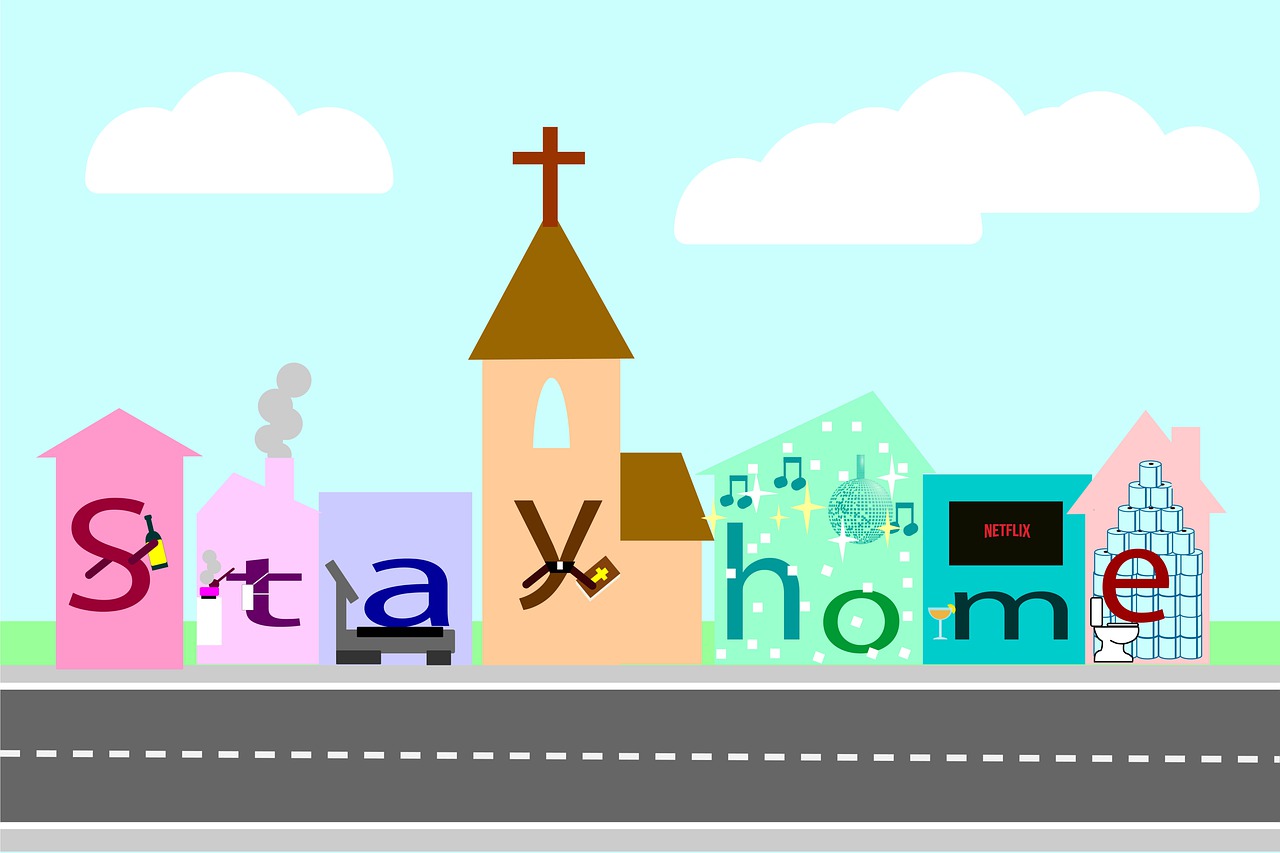 Mid-December saw a rapid rise in coronavirus cases in London and the South East and parts of eastern and central southern England. This was due to a new strain of Covid, which is more infectious. In response, the UK government introduced a new tier 4 level of restrictions for these areas from 20 December. These amount to a complete lockdown. The devolved administrations also announced lockdowns. In addition, the Christmas relaxation of rules was tightened across the UK. Households (up to three) were only allowed to get together on Christmas day and not the days either side (or one day between 23 and 27 December in the case of Northern Ireland). Tier 4 residents were not allowed to visit other households even on Christmas day.
Mid-December saw a rapid rise in coronavirus cases in London and the South East and parts of eastern and central southern England. This was due to a new strain of Covid, which is more infectious. In response, the UK government introduced a new tier 4 level of restrictions for these areas from 20 December. These amount to a complete lockdown. The devolved administrations also announced lockdowns. In addition, the Christmas relaxation of rules was tightened across the UK. Households (up to three) were only allowed to get together on Christmas day and not the days either side (or one day between 23 and 27 December in the case of Northern Ireland). Tier 4 residents were not allowed to visit other households even on Christmas day.
The lockdowns aimed to slow the spread of the virus and reduce deaths. But this comes at a considerable short-term economic cost, especially to the retail and leisure sectors, which are required to close while the lockdowns remain in force. In taking the decision to introduce these tougher measures, the four administrations had to weigh up the benefits of reduced deaths and illness and pressure on the NHS against the short-term economic damage. As far a long-term economic damage is concerned, this might be even greater if lockdowns were not imposed and the virus spread more rapidly.
In a blog back in September, we examined the use of cost–benefit analysis (CBA) to aid decision-making about such decisions. The following is an updated version of that blog.
The use of cost–benefit analysis
 It is commonplace to use cost–benefit analysis (CBA) in assessing public policies, such as whether to build a new hospital, road or rail line. Various attempts in the past few months have been made to use CBA in assessing policies to reduce the spread of the coronavirus. These have involved weighing up the costs and benefits of national or local lockdowns or other containment measures. But, as with other areas where CBA is used, there are serious problems of measuring costs and benefits and assessing risks. This is particularly problematic where human life is involved and where a value has to be attached to a life saved or lost.
It is commonplace to use cost–benefit analysis (CBA) in assessing public policies, such as whether to build a new hospital, road or rail line. Various attempts in the past few months have been made to use CBA in assessing policies to reduce the spread of the coronavirus. These have involved weighing up the costs and benefits of national or local lockdowns or other containment measures. But, as with other areas where CBA is used, there are serious problems of measuring costs and benefits and assessing risks. This is particularly problematic where human life is involved and where a value has to be attached to a life saved or lost.
The first step in a CBA is to identify the benefits and costs of the policy.
Identifying the benefits and costs of the lockdown
The benefits of the lockdown include lives saved and a reduction in suffering, not only for those who otherwise would have caught the virus but also for their family and friends. It also includes lives saved from other diseases whose treatment would have been put (even more) on hold if the pandemic had been allowed to rage and more people were hospitalised with the virus. In material terms, there is the benefit of saving in healthcare and medicines and the saving of labour resources. Then there are the environmental gains from less traffic and polluting activities.
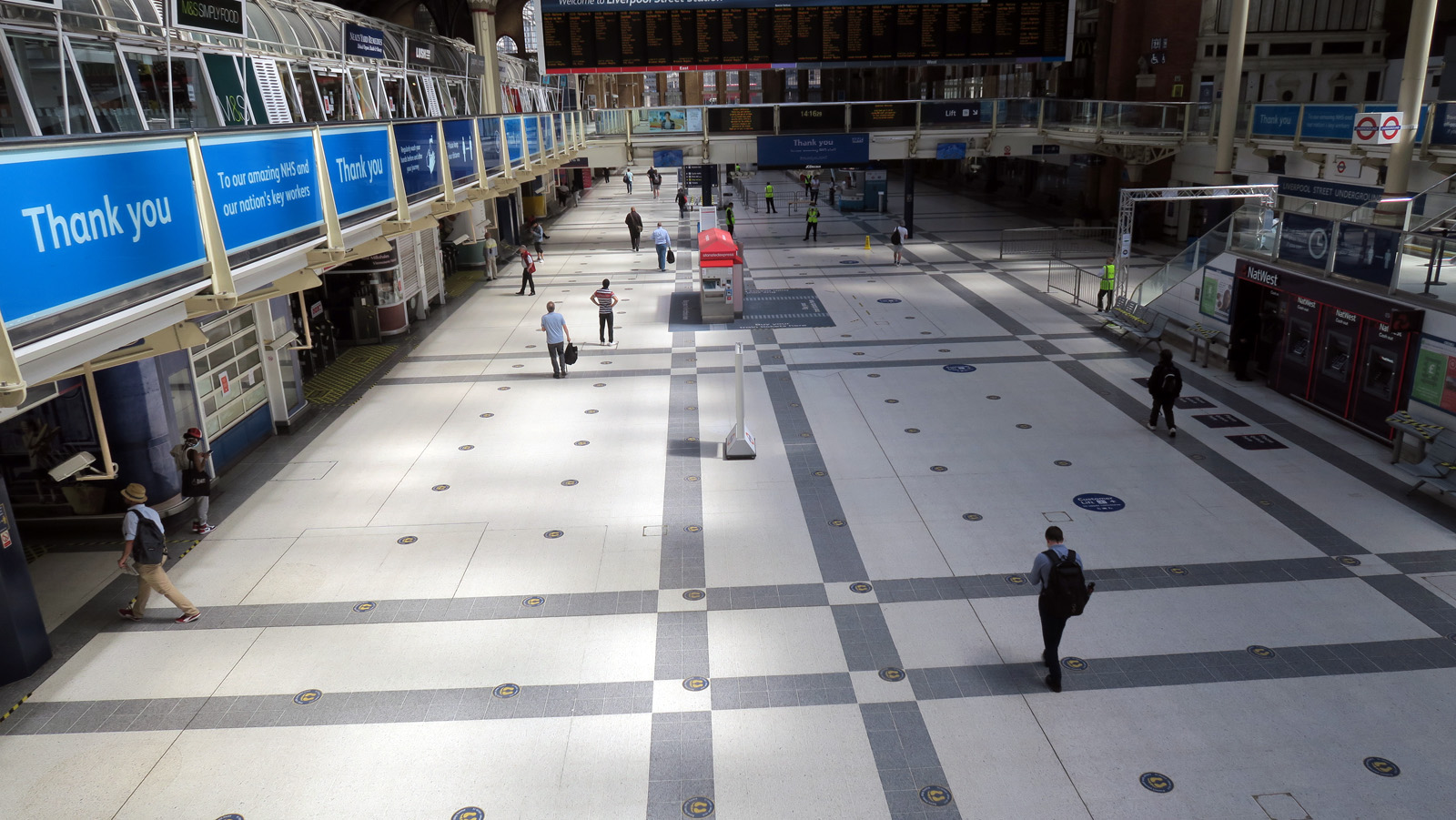 On the cost side, there is the decline in output from businesses being shut and people being furloughed or not being able to find work. There is also a cost if schools have to close and children’s education is thereby compromised. Then there is the personal cost to people of being confined to home, a cost that could be great for those in cramped living conditions or in abusive relationships. Over the longer term, there is a cost from people becoming deskilled and firms not investing – so-called scarring effects. Here there are the direct effects and the multiplier effects on the rest of the economy.
On the cost side, there is the decline in output from businesses being shut and people being furloughed or not being able to find work. There is also a cost if schools have to close and children’s education is thereby compromised. Then there is the personal cost to people of being confined to home, a cost that could be great for those in cramped living conditions or in abusive relationships. Over the longer term, there is a cost from people becoming deskilled and firms not investing – so-called scarring effects. Here there are the direct effects and the multiplier effects on the rest of the economy.
Estimating uncertain outcomes
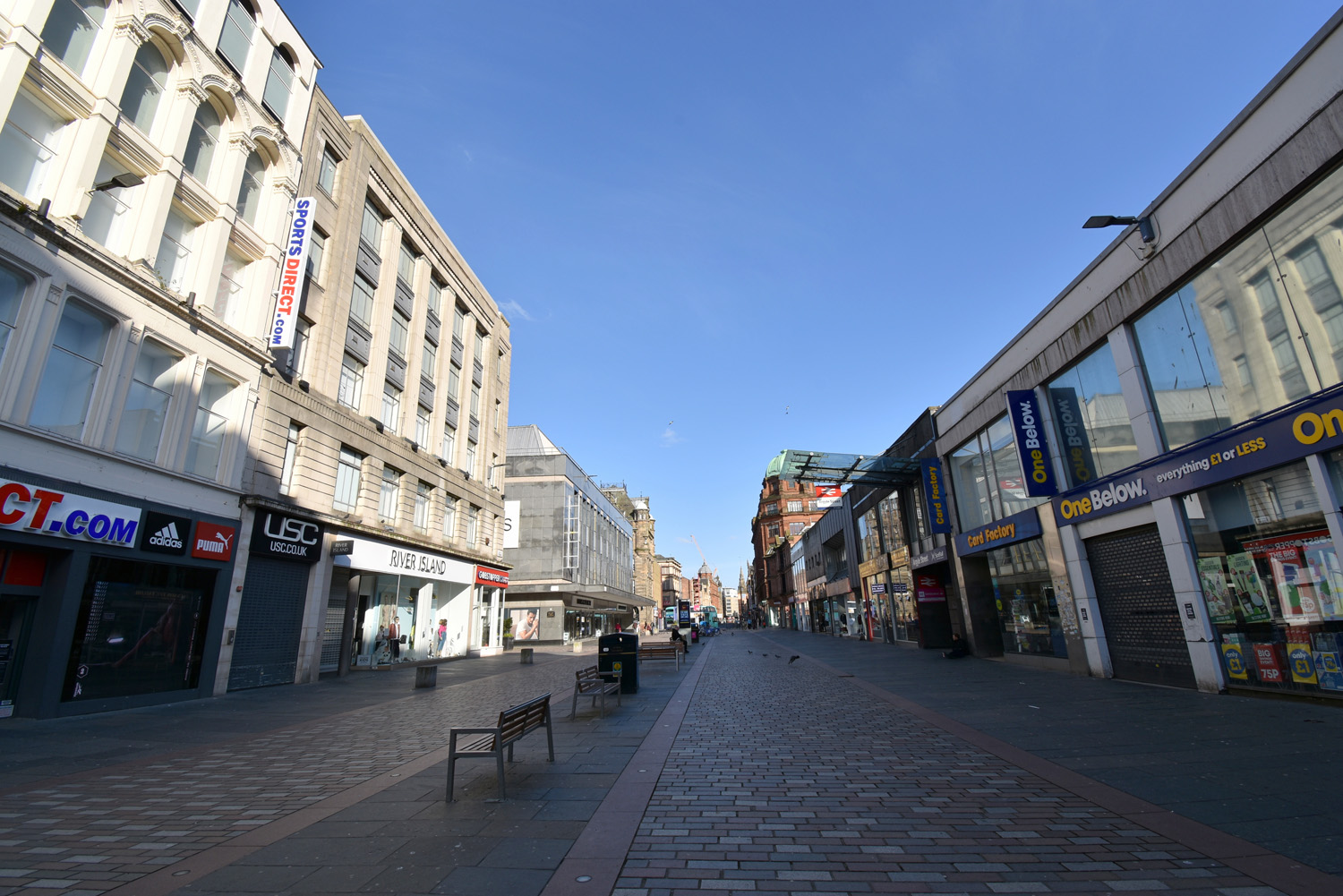 It is difficult enough identifying all the costs and benefits, but many occur in the future and here there is the problem of estimating the probability of their occurrence and their likely magnitude. Just how many lives will be saved from the policy and just how much will the economy be affected? Epidemiological and economic models can help, but there is a huge degree of uncertainty over predictions made about the spread of the disease, especially with a new strain of the virus, and the economic effects, especially over the longer term.
It is difficult enough identifying all the costs and benefits, but many occur in the future and here there is the problem of estimating the probability of their occurrence and their likely magnitude. Just how many lives will be saved from the policy and just how much will the economy be affected? Epidemiological and economic models can help, but there is a huge degree of uncertainty over predictions made about the spread of the disease, especially with a new strain of the virus, and the economic effects, especially over the longer term.
One estimate of the number of lives saved was made by Miles et al. in the NIESR paper linked below. A figure of 440 000 was calculated by subtracting the 60 000 actual excess deaths over the period of the first lockdown (March to June 2020) from a figure of 500 000 lives lost which, according to predictions, would have been the consequence of no lockdown. However, the authors acknowledge that this is likely to be a considerable overestimate because:
It does not account for changes in behaviour that would have occurred without the government lockdown; it does not count future higher deaths from side effects of the lockdown (extra cancer deaths for example); and it does not allow for the fact that some of those ‘saved’ deaths may just have been postponed because when restrictions are eased, and in the absence of a vaccine or of widespread immunity, deaths may pick up again.
Some help in estimating likely outcomes from locking down or not locking down the economy can be gained by comparing countries which have taken different approaches. The final article in the first list below compares the approaches in the UK and Sweden. Sweden had much lighter control measures than the UK and did not impose a lockdown. Using comparisons of the two approaches, the authors estimate that some 20 000 lives were saved by the lockdown – considerably less than the 440 000 estimate.
Estimating the value of a human life
To assess whether the saving of 20 000 lives was ‘worth it’, a value would have to be put on a life saved. Although putting a monetary value on a human life may be repugnant to many people, such calculations are made whenever a project is assessed which either saves or costs lives. As we say in the 10th edition of Economics (page 381):
Some people argue ‘You can’t put a price on a human life: life is priceless.’ But just what are they saying here? Are they saying that life has an infinite value? If so, the project must be carried out whatever the costs, and even if other benefits are zero! Clearly, when evaluating lives saved from the project, a value less than infinity must be given.
Other people might argue that human life cannot be treated like other costs and benefits and put into mathematical calculations. But what are these people saying? That the question of lives saved should be excluded from the cost–benefit study? If so, the implication is that life has a zero value! Again this is clearly not the case.
In practice, there are two approaches used to measure the value of a human life.
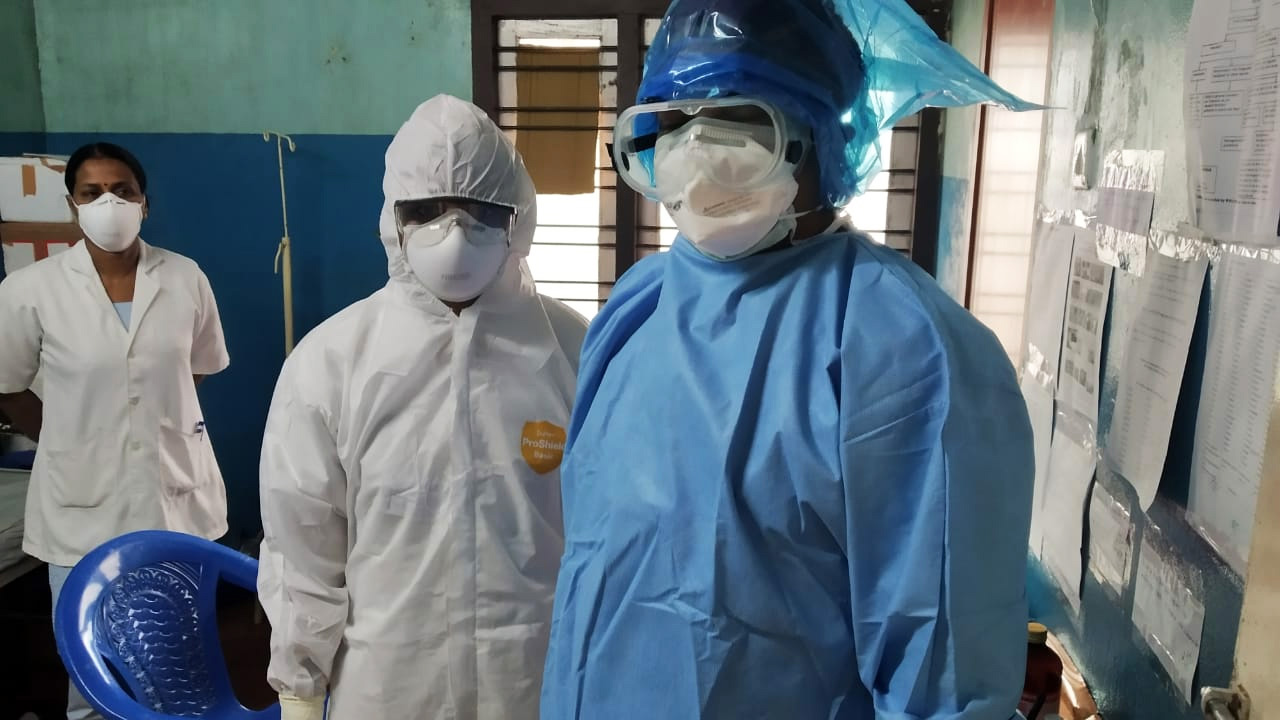 The first uses the value of a statistical life (VSL). This is based on the amount extra the average person would need to be paid to work in a job where there is a known probability of losing their life. So if people on average needed to be paid an extra £10 000 to work in a job with a 1% chance of losing their life, they would be valuing a life at £1 000 000 (£10 000/0.01). To avoid the obvious problem of young people’s lives being valued the same as old people’s ones, even though a 20 year-old on average will live much longer than a 70 year-old, a more common measure is the value of a statistical life year (VSLY).
The first uses the value of a statistical life (VSL). This is based on the amount extra the average person would need to be paid to work in a job where there is a known probability of losing their life. So if people on average needed to be paid an extra £10 000 to work in a job with a 1% chance of losing their life, they would be valuing a life at £1 000 000 (£10 000/0.01). To avoid the obvious problem of young people’s lives being valued the same as old people’s ones, even though a 20 year-old on average will live much longer than a 70 year-old, a more common measure is the value of a statistical life year (VSLY).
A problem with VSL or VSLY measures is that they only take into account the quantity of years of life lost or saved, not the quality.
A second measure rectifies this problem. This is the ‘quality of life adjusted year (QALY)’. This involves giving a value to a year of full health and then reducing it according to how much people’s quality of life is reduced by illness, injury or poverty. The problem with this measure is the moral one that a sick or disabled person’s life is being valued less than the life of a healthy person. But it is usual to make such adjustments when considering medical intervention with limited resources.
One adjustment often made to QALYs or VSLYs is to discount years, so that one year gained would be given the full value and each subsequent year would be discounted by a certain percentage from the previous year – say, 3%. This would give a lower weighting to years in the distant future than years in the near future and hence would reduce the gap in predicted gains from a policy between young and old people.
Cost–effectiveness analysis (CEA)
Even using QALYs, there is still the problem of measuring life and health/sickness. A simpler approach is to use cost–effectiveness analysis (CEA). This takes a social goal, such as reducing the virus production rate (R) below 1 (e.g. to 0.9), and then finding the least-cost way of achieving this. As Mark Carney says in his third Reith Lecture:
As advocated by the economists Nick Stern and Tim Besley, the ideal is to define our core purpose first and then determine the most cost-effective interventions to achieve this goal. Such cost–effectiveness analysis explicitly seeks to achieve society’s values.
Cost–effectiveness analysis can take account of various externalities – as many of the costs will be – by giving them a value. For example, the costs of a lockdown to people in the hospitality sector or to the education of the young could be estimated and included in the costs. The analysis can also take into account issues of fairness by identifying the effects on inequality when certain groups suffer particularly badly from Covid or lockdown policies – groups such as the poor, the elderly and children. Achieving the goal of a specific R for the least cost, including external costs and attaching higher weights on the effects on certain groups then becomes the goal. As Carney says:
R brings public health and economics together. Relaxations of restrictions increase R, with economic, health and social consequences. A strategic approach to Covid is the best combination of policies to achieve the desired level of infection control at minimum economic cost with due respect for inequality, mental health and other social consequences, and calculating those costs then provides guidance when considering different containment strategies. That means paying attention to the impact on measures of fairness, the social returns to education, intergenerational equity and economic dynamism.
Conclusion
Given the uncertainties surrounding the measurement of the number of lives saved and the difficulties of assigning a value to them, and given the difficulties of estimating the economic and social effects of lockdowns, it is not surprising that the conclusions of a cost–benefit analysis, or even a cost–effectiveness analysis of a lockdown will be contentious. But, at least such analysis can help to inform discussion and drive future policy decisions. And a cost–effectiveness analysis can be a practical way of helping politicians reach difficult decisions about life and death and the economy.
Articles (original blog)
- When Does the Cure Become Worse Than the Disease? Applying Cost-Benefit Analysis to the Covid-19 Recovery
Journal of Medical Ethics, blog, Derek Soled, Michelle Bayefsky and Rahul Nayak (19/5/20)
- How much did the Covid-19 lockdown really cost the UK?
The Guardian, Larry Elliott (6/9/20)
- The UK lockdown: Balancing costs against benefits
VoxEU, David Miles (13/7/20)
- How Economists Calculate The Costs And Benefits Of COVID-19 Lockdowns
Forbes, Chris Conover (27/3/20)
- Coronavirus Is Giving Cost-Benefit Analysts Fits
Bloomberg, Cass R. Sunstein (12/5/20)
- “Stay at Home, Protect the National Health Service, Save Lives”: a cost benefit analysis of the lockdown in the United Kingdom
Wiley Online Library, David Miles, Mike Stedman and Adrian Heald (13/8/20)
- COVID-19 is Forcing Economists to Rethink the Value of Life
RealClearPolicy, James Broughel (20/8/20)
- A cost–benefit analysis of the COVID-19 disease
Oxford Review of Economic Policy, Robert Rowthorn and Jan Maciejowski (28/8/20)
- Living with Covid-19: Balancing Costs against Benefits in the Face of the Virus
National Institute Economic Review, vol. 253, David Miles, Mike Stedman and Adrian Heald (28/7/20)
- How Many Lives Has Lockdown Saved in the UK?
medRxiv, Rickard Nyman and Paul Ormerod (21/8/20)
Articles (additional)
Questions
- What are the arguments for and against putting a monetary value on a life saved?
- Are QALYs the best way of measuring lives saved from a policy such as a lockdown?
- Compare the relative merits of cost–benefit analysis and cost–effectiveness analysis.
- If the outcomes of a lockdown are highly uncertain, does this strengthen or weaken the case for a lockdown? Explain.
- What specific problems are there in estimating the number of lives saved by a lockdown?
- How might the age distribution of people dying from Covid-19 affect the calculation of the cost of these deaths (or the benefits or avoiding them)?
- How might you estimate the costs to people who suffer long-term health effects from having had Covid-19?
- What are the arguments for and against using discounting in estimating future QALYs?
- The Department of Transport currently uses a figure of £1 958 303 (in 2018 prices) for the value of a life saved from a road safety project. Find out how this is figure derived and comment on it. See Box 12.5 in Economics 10th edition and Accident and casualty costs, Tables RAS60001 and RA60003, (Department of Transport, 2019).
 It is commonplace to use cost–benefit analysis (CBA) in assessing public policies, such as whether to build a new hospital, road or rail line. Various attempts in the past few months have been made to use CBA in assessing policies to reduce the spread of the coronavirus. These have involved weighing up the costs and benefits of national or local lockdowns or other containment measures. But, as with other areas where CBA is used, there are serious problems of measuring costs and benefits and assessing risks. This is particularly problematic where human life is involved and where a value has to be attached to a life saved or lost.
It is commonplace to use cost–benefit analysis (CBA) in assessing public policies, such as whether to build a new hospital, road or rail line. Various attempts in the past few months have been made to use CBA in assessing policies to reduce the spread of the coronavirus. These have involved weighing up the costs and benefits of national or local lockdowns or other containment measures. But, as with other areas where CBA is used, there are serious problems of measuring costs and benefits and assessing risks. This is particularly problematic where human life is involved and where a value has to be attached to a life saved or lost.
Take the case of whether the government should have imposed a lockdown: an important question if there were to be a second wave and the government was considering introducing a second lockdown. The first step in a CBA is to identify the benefits and costs of the policy.
Identifying the benefits and costs of the lockdown
The benefits of the lockdown include lives saved and a reduction in suffering, not only for those who otherwise would have caught the virus but also for their family and friends. It also includes lives saved from other diseases whose treatment would have been put (even more) on hold if the pandemic had been allowed to rage and more people were hospitalised with the virus. In material terms, there is the benefit of saving in healthcare and medicines and the saving of labour resources. Then there are the environmental gains from less traffic and polluting activities.
 On the cost side, there is the decline in output from businesses being shut and people being furloughed or not being able to find work. There is also a cost from schools being closed and children’s education being compromised. Then there is the personal cost to people of being confined to home, a cost that could be great for those in cramped living conditions or in abusive relationships. Over the longer term, there is a cost from people becoming deskilled and firms not investing – so-called scarring effects. Here there are the direct effects and the multiplier effects on the rest of the economy.
On the cost side, there is the decline in output from businesses being shut and people being furloughed or not being able to find work. There is also a cost from schools being closed and children’s education being compromised. Then there is the personal cost to people of being confined to home, a cost that could be great for those in cramped living conditions or in abusive relationships. Over the longer term, there is a cost from people becoming deskilled and firms not investing – so-called scarring effects. Here there are the direct effects and the multiplier effects on the rest of the economy.
Estimating uncertain outcomes
 It is difficult enough identifying all the costs and benefits, but many occur in the future and here there is the problem of estimating the probability of their occurrence and their likely magnitude. Just how many lives will be saved from the policy and just how much will the economy be affected? Epidemiological and economic models can help, but there is a huge degree of uncertainty over predictions made about the spread of the disease and the economic effects, especially over the longer term.
It is difficult enough identifying all the costs and benefits, but many occur in the future and here there is the problem of estimating the probability of their occurrence and their likely magnitude. Just how many lives will be saved from the policy and just how much will the economy be affected? Epidemiological and economic models can help, but there is a huge degree of uncertainty over predictions made about the spread of the disease and the economic effects, especially over the longer term.
One estimate of the number of lives saved was made by Miles et al. in the NIESR paper linked below. A figure of 440 000 was calculated by subtracting the 60 000 actual excess deaths over the period of the lockdown from a figure of 500 000 lives lost which, according to predictions, would have been the consequence of no lockdown. However, the authors acknowledge that this is likely to be a considerable overestimate because:
It does not account for changes in behaviour that would have occurred without the government lockdown; it does not count future higher deaths from side effects of the lockdown (extra cancer deaths for example); and it does not allow for the fact that some of those ‘saved’ deaths may just have been postponed because when restrictions are eased, and in the absence of a vaccine or of widespread immunity, deaths may pick up again.
Some help in estimating likely outcomes from locking down or not locking down the economy can be gained by comparing countries which have taken different approaches. The final article below compares the approaches in the UK and Sweden. Sweden had much lighter control measures than the UK and did not impose a lockdown. Using comparisons of the two approaches, the authors estimate that some 20 000 lives were saved by the lockdown – considerably less than the 440 000 estimate.
Estimating the value of a human life
To assess whether the saving of 20 000 lives was ‘worth it’, a value would have to be put on a life saved. Although putting a monetary value on a human life may be repugnant to many people, such calculations are made whenever a project is assessed which either saves or costs lives. As we say in the 10th edition of Economics (page 381):
Some people argue ‘You can’t put a price on a human life: life is priceless.’ But just what are they saying here? Are they saying that life has an infinite value? If so, the project must be carried out whatever the costs, and even if other benefits are zero! Clearly, when evaluating lives saved from the project, a value less than infinity must be given.
Other people might argue that human life cannot be treated like other costs and benefits and put into mathematical calculations. But what are these people saying? That the question of lives saved should be excluded from the cost–benefit study? If so, the implication is that life has a zero value! Again this is clearly not the case.
In practice there are two approaches used to measuring the value of a human life.
 The first uses the value of a statistical life (VSL). This is based on the amount extra the average person would need to be paid to work in a job where there is a known probability of losing their life. So if people on average needed to be paid an extra £10 000 to work in a job with a 1% chance of losing their life, they would be valuing a life at £1 000 000 (£10 000/0.01). To avoid the obvious problem of young people’s lives being valued the same as old people’s ones, even though a 20 year-old on average will live much longer than a 70 year-old, a more common measure is the value of a statistical life year (VSLY).
The first uses the value of a statistical life (VSL). This is based on the amount extra the average person would need to be paid to work in a job where there is a known probability of losing their life. So if people on average needed to be paid an extra £10 000 to work in a job with a 1% chance of losing their life, they would be valuing a life at £1 000 000 (£10 000/0.01). To avoid the obvious problem of young people’s lives being valued the same as old people’s ones, even though a 20 year-old on average will live much longer than a 70 year-old, a more common measure is the value of a statistical life year (VSLY).
A problem with VSL or VSLY measures is that they only take into account the quantity of years of life lost or saved, not the quality.
A second measure rectifies this problem. This is the ‘quality of life adjusted year (QALY)’. This involves giving a value to a year of full health and then reducing it according to how much people’s quality of life is reduced by illness, injury or poverty. The problem with this measure is the moral one that a sick or disabled person’s life is being valued less than the life of a healthy person. But it is usual to make such adjustments when considering medical intervention with limited resources.
One adjustment often made to QALYs or VSLYs is to discount years, so that one year gained would be given the full value and each subsequent year would be discounted by a certain percentage from the previous year – say, 3%. This would give a lower weighting to years in the distant future than years in the near future and hence would reduce the gap in predicted gains from a policy between young and old people.
Conclusion
Given the uncertainties surrounding the measurement of the number of lives saved and the difficulties of assigning a value to them, it is not surprising that the conclusions of a cost–benefit analysis of a lockdown will be contentious. And we have yet to see what the long-term effects on the economy will be. But, at least a cost–benefit analysis of the lockdown can help to inform discussion and help to drive future policy decisions about tackling a second wave, whether internationally, nationally or locally.
Articles
- When Does the Cure Become Worse Than the Disease? Applying Cost-Benefit Analysis to the Covid-19 Recovery
Journal of Medical Ethics, blog, Derek Soled, Michelle Bayefsky and Rahul Nayak (19/5/20)
- How much did the Covid-19 lockdown really cost the UK?
The Guardian, Larry Elliott (6/9/20)
- The UK lockdown: Balancing costs against benefits
VoxEU, David Miles (13/7/20)
- How Economists Calculate The Costs And Benefits Of COVID-19 Lockdowns
Forbes, Chris Conover (27/5/20)
- Coronavirus Is Giving Cost-Benefit Analysts Fits
Bloomberg, Cass R. Sunstein (12/5/20)
- “Stay at Home, Protect the National Health Service, Save Lives”: a cost benefit analysis of the lockdown in the United Kingdom
Wiley Online Library, David Miles, Mike Stedman and Adrian Heald (13/8/20)
- COVID-19 is Forcing Economists to Rethink the Value of Life
RealClearPolicy, James Broughel (20/8/20)
- A cost–benefit analysis of the COVID-19 disease
Oxford Review of Economic Policy, Robert Rowthorn and Jan Maciejowski (28/8/20)
- Living with Covid-19: Balancing Costs against Benefits in the Face of the Virus
National Institute Economic Review, vol. 253, David Miles, Mike Stedman and Adrian Heald (28/7/20)
- How Many Lives Has Lockdown Saved in the UK?
medRxiv, Rickard Nyman and Paul Ormerod (21/8/20)
Questions
- What are the arguments for and against putting a monetary value on a life saved?
- Are QALYs the best way of measuring lives saved from a policy such as a lockdown?
- If the outcomes of a lockdown are highly uncertain, does this strengthen or weaken the case for a lockdown? Explain.
- What specific problems are there in estimating the number of lives saved by a lockdown?
- How might the age distribution of people dying from Covid-19 affect the calculation of the cost of these deaths (or the benefits or avoiding them)?
- How might you estimate the costs to people who suffer long-term health effects from having had Covid-19?
- What are the arguments for and against using discounting in estimating future QALYs?
- The Department of Transport currently uses a figure of £1 958 303 (in 2018 prices) for the value of a life saved from a road safety project. Find out how this is figure derived and comment on it. See Box 12.5 in Economics 10th edition and Accident and casualty costs, Tables RAS60001 and RA60003, (Department of Transport, 2019).
 The Winter Olympics are full on as athletes from all over the world compete against each other, hoping to set new world records, win medals and be known as Olympians. Pyeongchang, the South Korean county that hosts the 2018 Winter games, enjoys a large influx of tourists – estimated at 80,000 people a day. This is certainly an unusually large number of tourists for a region that has a regular winter-time population of no more than 45,000 people.
The Winter Olympics are full on as athletes from all over the world compete against each other, hoping to set new world records, win medals and be known as Olympians. Pyeongchang, the South Korean county that hosts the 2018 Winter games, enjoys a large influx of tourists – estimated at 80,000 people a day. This is certainly an unusually large number of tourists for a region that has a regular winter-time population of no more than 45,000 people.
Having such a high number of visitors to the Winter Olympics, and even more to the larger Summer Olympics, is not an unusual occurrence, however, and it is often mentioned as one of the benefits of being a host to the Olympic Games.
Baade and Matheson (see link below) distinguish between three key benefits of hosting the Olympic Games: “the short-run benefits of tourist spending during the Games; the long-run benefits or the ‘Olympic legacy’, which might include improvements in infrastructure and increased trade, foreign investment, or tourism after the Games; and intangible benefits such as the ‘feel-good effect’ or civic pride”.
On these grounds, a number of studies have been authored, attempting to analyse some or all of these benefits, distinguishing between short-term and long-term effects. Müller (see link below), uses data from the 2014 Oympic Games in Sochi, Russia, to assess the net economic outcome for the host region. He concludes that any short-term economic benefits caused by the investment influx (before and during the games) could not offset the long-term costs, leading to an estimated net loss of $1.2 billion per year.
Zimbalist (2015) and Szymanski (2011) report similar results when analysing data from the London Games (2012) and past major sporting events (Games and FIFA World Cup). Kasimati (2003) points out the significant economic benefits that host regions tend to enjoy for years after hosting the games, but argues that the overall effect depends on a number of factors (including pre-existing infrastructure and location).
The jury is, therefore, still out on what is the overall economic effect of being host to this ancient institution. But I must now dash as women’s hockey is soon to start. “Let everyone shine”.
Articles
For the sake of the games, South Korea needs to show hosting an Olympics can be economically viable CNBC, Yen Nee Lee (15/2/18)
South Korea’s Olympic bet is unlikely to pay off, economics professor says CNBC, Andrew Wong and Andrew Zimbalist (12/2/18)
Going for the Gold: The Economics of the Olympics Journal of Economic Perspectives, Robert A. Baade and Victor A. Matheson (Spring 2016)
After Sochi 2014: Costs and Impacts of Russia’s Olympic Games Eurasian Geography and Economics, Martin Müller (9/4/15)
Circus Maximus: The Economic Gamble Behind Hosting the Olympics and the World Cup The Brookings Institution, Andrew Zimbalist (14/1/15)
About Winning: The Political Economy of Awarding the World Cup and the Olympic Games SAIS Review of International Affairs, Stefan Szymanski (Winter/Spring 2011)
Economic aspects and the Summer Olympics: a review of related research International Journal of Tourism Research, Evangelia Kasimati (4/11/03)
“Let Everyone Shine”: the song for the PyeongChang 2018 Torch Relay unveiled with 200 days to go Olympic Committee (24/7/17)
Video
 The Olympic Winter Games PyeongChang 2018 Torch Relay Official Song PyeongChang 2018
The Olympic Winter Games PyeongChang 2018 Torch Relay Official Song PyeongChang 2018
Questions
- Using supply and demand diagrams, explain whether you would expect hotel room prices to change during the hosting of a major sports event, such as the Winter Olympics.
- List three economic (or economics-related) arguments in favour of and against the hosting of the Olympic games. Relate your answer to the empirical evidence presented in the literature.
- Why is it so difficult to estimate with accuracy the net economic effect of the Olympic Games?
 HS2 has been cancelled north of Birmingham. The prime minister, Rishi Sunak, announced this at the Conservative Party conference on 4 October, some 13 years after the plan was adopted by the Labour government to build a new high-speed railway from London to Birmingham, which then would branch into two legs – one to Manchester and one to Leeds. The initial budget for this was £15.8bn to £17.4bn. When it came to power, the Conservative-Liberal coalition government ordered a review of the plan. In light of this, the government gave the green light in January 2012 for the full Y-shaped project to go ahead. The London–Birmingham leg was planned to open in 2026 and the two northern legs from 2033.
HS2 has been cancelled north of Birmingham. The prime minister, Rishi Sunak, announced this at the Conservative Party conference on 4 October, some 13 years after the plan was adopted by the Labour government to build a new high-speed railway from London to Birmingham, which then would branch into two legs – one to Manchester and one to Leeds. The initial budget for this was £15.8bn to £17.4bn. When it came to power, the Conservative-Liberal coalition government ordered a review of the plan. In light of this, the government gave the green light in January 2012 for the full Y-shaped project to go ahead. The London–Birmingham leg was planned to open in 2026 and the two northern legs from 2033. The project was divided into two phases: Phase 1 to Birmingham and Phase 2 to Manchester and Leeds. The Phase 1 parliamentary bill became law in February 2017 and soon after that, various construction contracts were signed. After some delays, preparation for construction work began in June 2019. There was growing doubt, however, about the viability of the northern legs.
The project was divided into two phases: Phase 1 to Birmingham and Phase 2 to Manchester and Leeds. The Phase 1 parliamentary bill became law in February 2017 and soon after that, various construction contracts were signed. After some delays, preparation for construction work began in June 2019. There was growing doubt, however, about the viability of the northern legs.

 In order to judge whether the diversion of funds represents a better use of money, a full analysis of costs and benefits of the various projects would need to be conducted and compared with an updated cost–benefit analysis of continuing with the legs to Manchester and the east Midlands and possibly reinstating the Leeds leg too.
In order to judge whether the diversion of funds represents a better use of money, a full analysis of costs and benefits of the various projects would need to be conducted and compared with an updated cost–benefit analysis of continuing with the legs to Manchester and the east Midlands and possibly reinstating the Leeds leg too. The benefits originally identified from HS2 will now be lost. It is not just that the northern legs of HS2 would have provided faster travel to Manchester and Leeds, but the new lines would have reduced congestion for slower trains and freight on existing lines. This has been the experience in countries such as Japan and Spain, which have invested heavily in new, separate high-speed lines.
The benefits originally identified from HS2 will now be lost. It is not just that the northern legs of HS2 would have provided faster travel to Manchester and Leeds, but the new lines would have reduced congestion for slower trains and freight on existing lines. This has been the experience in countries such as Japan and Spain, which have invested heavily in new, separate high-speed lines. HS2 explained: What is the route now, what are the costs and why is the Manchester leg being axed?
HS2 explained: What is the route now, what are the costs and why is the Manchester leg being axed? Investment outside London could bring £100bn boost to economy, says Bank of England’s former chief economist
Investment outside London could bring £100bn boost to economy, says Bank of England’s former chief economist When building supply and demand models, the assumption is usually made that both producers and consumers act in a ‘rational’ way to achieve the best possible outcomes. As far as producers are concerned, this would mean attempting to maximise profit. As far as consumers are concerned, it would mean attempting to achieve the highest satisfaction (utility) from their limited budget. This involves a cost–benefit calculation, where people weigh up the costs and benefits of allocating their money between different goods and services.
When building supply and demand models, the assumption is usually made that both producers and consumers act in a ‘rational’ way to achieve the best possible outcomes. As far as producers are concerned, this would mean attempting to maximise profit. As far as consumers are concerned, it would mean attempting to achieve the highest satisfaction (utility) from their limited budget. This involves a cost–benefit calculation, where people weigh up the costs and benefits of allocating their money between different goods and services. Black Friday can be seen as a perfect occasion for consumers to get their hands on a bargain. It is an opportunity to fulfil a rational need, for example if you were needing to replace a household appliance but were waiting until there was a good deal before committing to a purchase.
Black Friday can be seen as a perfect occasion for consumers to get their hands on a bargain. It is an opportunity to fulfil a rational need, for example if you were needing to replace a household appliance but were waiting until there was a good deal before committing to a purchase.  Arguably, from a behavioural economist’s perspective, the big problem with Black Friday is that all the reasons consumers possibly have to partake can be largely illusory. Consumers are bombarded with the promise of one-off deals, large discounts, scarce products, and an opportunity to get their holiday shopping done all at once. However, on Black Friday, our rational decision-making faculties are tested, just as stores are trying their hardest to maximise consumers’ mistakes.
Arguably, from a behavioural economist’s perspective, the big problem with Black Friday is that all the reasons consumers possibly have to partake can be largely illusory. Consumers are bombarded with the promise of one-off deals, large discounts, scarce products, and an opportunity to get their holiday shopping done all at once. However, on Black Friday, our rational decision-making faculties are tested, just as stores are trying their hardest to maximise consumers’ mistakes. This year, however, there is also the added complication of the rising cost of living. Whilst this may deter some consumers from unnecessary, impulse purchases, some consumers are using Black Friday as an opportunity to stock up on expected future purchases, hedging against likely price rises over the coming months.
This year, however, there is also the added complication of the rising cost of living. Whilst this may deter some consumers from unnecessary, impulse purchases, some consumers are using Black Friday as an opportunity to stock up on expected future purchases, hedging against likely price rises over the coming months. Black Friday is one of the biggest shopping days of the year. However, the way retailers approach it is growing increasingly mixed. Stores such as Amazon, Argos, Currys and John Lewis have started offering Black Friday deals much earlier in the month, leading some to refer to the event as ‘Black November’. Other stores, such as M&S and Next, didn’t take part at all this year.
Black Friday is one of the biggest shopping days of the year. However, the way retailers approach it is growing increasingly mixed. Stores such as Amazon, Argos, Currys and John Lewis have started offering Black Friday deals much earlier in the month, leading some to refer to the event as ‘Black November’. Other stores, such as M&S and Next, didn’t take part at all this year. Mid-December saw a rapid rise in coronavirus cases in London and the South East and parts of eastern and central southern England. This was due to a new strain of Covid, which is more infectious. In response, the UK government introduced a new
Mid-December saw a rapid rise in coronavirus cases in London and the South East and parts of eastern and central southern England. This was due to a new strain of Covid, which is more infectious. In response, the UK government introduced a new  It is commonplace to use cost–benefit analysis (CBA) in assessing public policies, such as whether to build a new hospital, road or rail line. Various attempts in the past few months have been made to use CBA in assessing policies to reduce the spread of the coronavirus. These have involved weighing up the costs and benefits of national or local lockdowns or other containment measures. But, as with other areas where CBA is used, there are serious problems of measuring costs and benefits and assessing risks. This is particularly problematic where human life is involved and where a value has to be attached to a life saved or lost.
It is commonplace to use cost–benefit analysis (CBA) in assessing public policies, such as whether to build a new hospital, road or rail line. Various attempts in the past few months have been made to use CBA in assessing policies to reduce the spread of the coronavirus. These have involved weighing up the costs and benefits of national or local lockdowns or other containment measures. But, as with other areas where CBA is used, there are serious problems of measuring costs and benefits and assessing risks. This is particularly problematic where human life is involved and where a value has to be attached to a life saved or lost. On the cost side, there is the decline in output from businesses being shut and people being furloughed or not being able to find work. There is also a cost if schools have to close and children’s education is thereby compromised. Then there is the personal cost to people of being confined to home, a cost that could be great for those in cramped living conditions or in abusive relationships. Over the longer term, there is a cost from people becoming deskilled and firms not investing – so-called scarring effects. Here there are the direct effects and the multiplier effects on the rest of the economy.
On the cost side, there is the decline in output from businesses being shut and people being furloughed or not being able to find work. There is also a cost if schools have to close and children’s education is thereby compromised. Then there is the personal cost to people of being confined to home, a cost that could be great for those in cramped living conditions or in abusive relationships. Over the longer term, there is a cost from people becoming deskilled and firms not investing – so-called scarring effects. Here there are the direct effects and the multiplier effects on the rest of the economy. It is difficult enough identifying all the costs and benefits, but many occur in the future and here there is the problem of estimating the probability of their occurrence and their likely magnitude. Just how many lives will be saved from the policy and just how much will the economy be affected? Epidemiological and economic models can help, but there is a huge degree of uncertainty over predictions made about the spread of the disease, especially with a new strain of the virus, and the economic effects, especially over the longer term.
It is difficult enough identifying all the costs and benefits, but many occur in the future and here there is the problem of estimating the probability of their occurrence and their likely magnitude. Just how many lives will be saved from the policy and just how much will the economy be affected? Epidemiological and economic models can help, but there is a huge degree of uncertainty over predictions made about the spread of the disease, especially with a new strain of the virus, and the economic effects, especially over the longer term. The first uses the value of a statistical life (VSL). This is based on the amount extra the average person would need to be paid to work in a job where there is a known probability of losing their life. So if people on average needed to be paid an extra £10 000 to work in a job with a 1% chance of losing their life, they would be valuing a life at £1 000 000 (£10 000/0.01). To avoid the obvious problem of young people’s lives being valued the same as old people’s ones, even though a 20 year-old on average will live much longer than a 70 year-old, a more common measure is the value of a statistical life year (VSLY).
The first uses the value of a statistical life (VSL). This is based on the amount extra the average person would need to be paid to work in a job where there is a known probability of losing their life. So if people on average needed to be paid an extra £10 000 to work in a job with a 1% chance of losing their life, they would be valuing a life at £1 000 000 (£10 000/0.01). To avoid the obvious problem of young people’s lives being valued the same as old people’s ones, even though a 20 year-old on average will live much longer than a 70 year-old, a more common measure is the value of a statistical life year (VSLY).